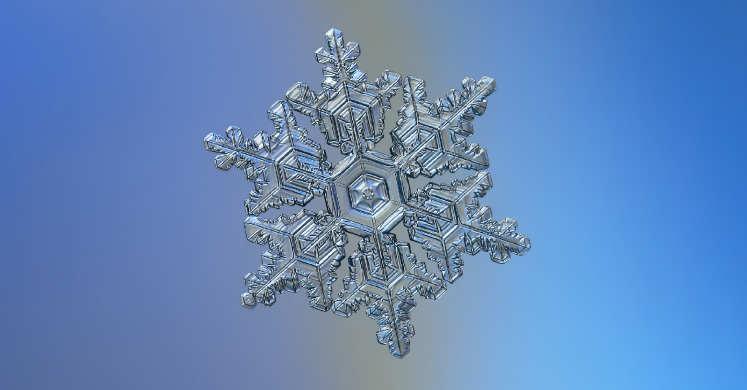Blog

#bioPGH: Those Frozen Fractals All Around
 A resource of Biophilia: Pittsburgh, #bioPGH is a weekly blog and social media series that aims to encourage both children and adults to reconnect with nature and enjoy what each of our distinctive seasons has to offer.
A resource of Biophilia: Pittsburgh, #bioPGH is a weekly blog and social media series that aims to encourage both children and adults to reconnect with nature and enjoy what each of our distinctive seasons has to offer.
We may not talk about Bruno right now, but winter’s theme song still comes from a Snow Queen*—who has apparently been quite busy the past few weeks! Depending on where you are in the Pittsburgh area, you might have received 7 – 13 inches of snow (or more) just since January 16. While snowfalls are a wonder to behold, have you ever gotten a brain freeze trying to imagine the frosty formation of millions upon millions of tiny snowflakes? Aside from Elsa’s magic, how do those millions of snowflakes crystallize? Let’s take a look at the flurry of activity going on to create…snow!
To get the process started, we need our two main snow ingredients: water vapor (moisture in the air) and a little speck of something — perhaps dust, a microbe that made it high into the atmosphere, pollen, volcanic ash, etc. Water vapor in the atmosphere will begin freezing around said speck of dust, which ultimately becomes the center of a snowflake. Since water is a chemical, snowflakes form in the predictable patterns of water chemistry. As the little water crystals form, they grow into hexagonal shapes; it’s the most efficient way for water molecules to link together. We can see the macroscopic view of this as snowflakes always have six points! As the snowflakes grow, each one will also experience a range of conditions different from its tiny frozen neighbors. Perhaps this one meets a gust of cold air while that one meets a gust of very cold air. The temperature will impact the crystallization process, meaning that the final outcome of each snowflake will be delightfully unpredictable and unique. Crystallization patterns are influenced by the temperature of the snowflake as it forms in the atmosphere. Since the teeny little developing snowflake will bounce around in the atmosphere before eventually falling to Earth, there are plenty of opportunities for a growing snowflake to encounter different conditions that add natural variations to the crystals.
Let’s visualize the process with this video:
Though we probably associate snow with cold weather, as we noted above, moisture in the air also plays a huge role in how much snow can form in a given area. One of the driest, least snowy, yet utterly freezing places on Earth is the McMurdo Dry Valley of Antarctica. Shielded from the moisture-laden winds of the Ross Sea by a mountain range, the McMurdo Dry Valley receives an estimated 3-50 mm of total precipitation every year. On the flipside, one of the snowiest places the world is within a temperate climate range, not unlike ours. The mountain village of Tokamachi, Japan, receives an average 460 inches of snow per year. In a similar situation to lake effect snow, Tokamachi’s snow comes from cold air traveling over the warmer Sea of Japan. This allows cold air masses to accumulate heat and water vapor as it travels, building up large clouds that drop very large quantities of snow.
Pittsburgh probably won’t be receiving world records quantities of snow any time, and I am ok with that! I am just excited to enjoy our own little winter wonderland for however long it lasts.
Connecting to the Outdoors Tip: Be sure to enjoy the snow before it melts! If you're wanting to try some new trails, check out Hollow Oak Land Trust or Allegheny Land Trust properties!
Continue the Conversation: Share your nature discoveries with our community by posting to Twitter and Instagram with hashtag #bioPGH, and R.S.V.P. to attend our next Biophilia: Pittsburgh meeting.
*Two references to Disney songs in one post – apologies that this writer isn’t quite yet a grown-up.
Centre for Ice and Climate – Ice crystal structure
Mass Audubon – The Science of Snowflakes
Smithsonian – Snowflakes May Have Different Designs, But They Always Have Six Sides
National Snow and Ice Data Center – All About Snow
NOAA – The Science Behind the Snow
NOAA SciJinks – How Do Snowflakes Form?
Photo credits: Header, Pexels public domain; cover, Alexey Kljatov CC-BY-2.0

